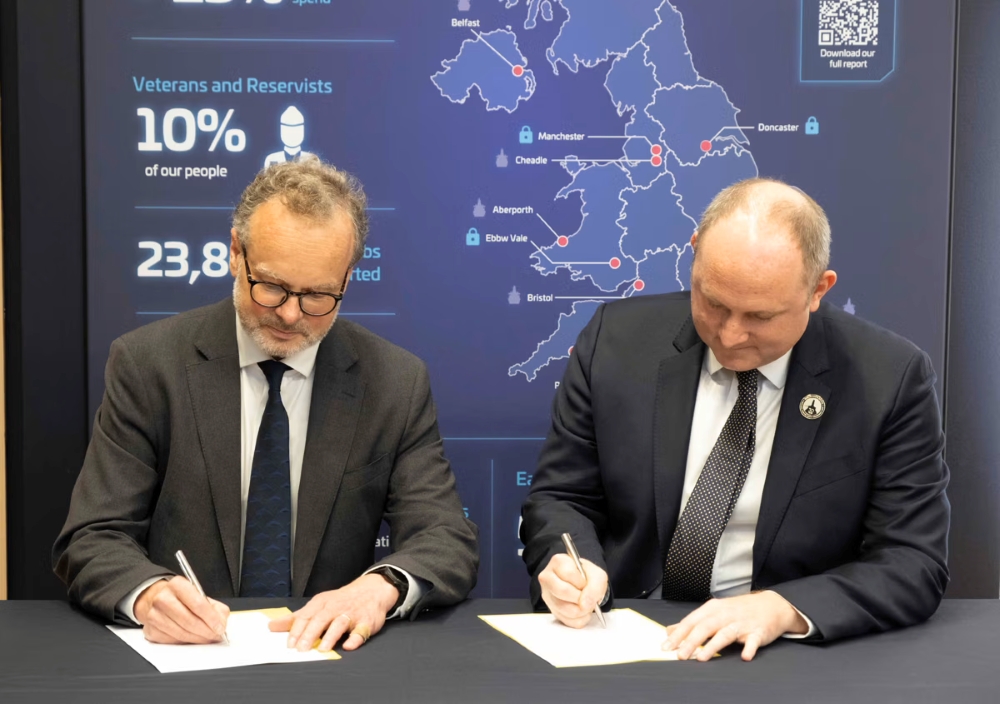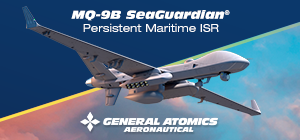
At DSEI, BAE Systems and Thales have signed a Memorandum of Understanding to reaffirm their collaboration in the field of submarine sonars. BAE, as Prime contractor in the development of the SSN-AUKUS for United Kingdom and Australia, is proposing Thales as the pan-flottilla Main Sonar Design Authority and Integrator. Sonar products and components will continue to be sourced from across the UK sonar enterprise on a ‘best athlete’ basis.
BAE Systems and Thales employ around 500 people in the UK, a number that is expected to grow beyond 660 as the development of technology for the next generation SSN picks up pace.
The 2076 sonar suite has celebrated at DSEI 30 years of success at sea, and the team behind it, comprising the Defence Nuclear Organisation (DNO), Submarine Delivery Agency (SDA), Royal Navy, BAE Systems, DSTL, and obviously Thales, have used the occasion to announce the development of the successor suite, the 2176.
Details about this most sensitive piece of technology are of course not available, but the 2176 suite is to deliver a “generational leap in performance, modularity, and adaptability”. Leveraging the evolution of its predecessor and modern electronics and software, the 2176 will be designed from the outset for spiral development through-life and it is intended to be fully integrated with the new SSN-AUKUS from the start.
It is understood that the SSN-AUKUS, which is to integrate technology from all three partner countries, including the US, is headed towards the use of an American Combat System, an evolution of the AN/BYG-1 that equips both US and Australian navy submarines. With this move, however, the UK signals that it wants to maintain a sovereign sonar capability building on a system which has been used with full satisfaction and is held in extremely high regard worldwide. The 2076 sonar suite, believed to have over 13,000 hydrophones across its many apertures, equipped the now decommissioned TRAFALGAR class SSNs and the current ASTUTE class boats.
The subdivision of “competencies” for the SSN-AUKUS is thus progressively becoming known. At the end of August, Huntington Ingalls Inc was awarded by the Pentagon nearly 33 million USD for “the development, maintenance, and delivery of the Common Weapon Launcher and Multi-Tube Weapon Simulator” in the context of AUKUS, with UK and Australia funding included. This would appear to confirm that the torpedo tubes will be of US origin. The next generation guides of the MK48 torpedo family are expected to be used on SSN-AUKUS, surely for Australia, although the UK has not yet ruled out the development of a national successor to SPEARFISH.
In July, Babcock had revealed that it had started work to develop the Weapon Handling and Launch System for the SSN-AUKUS. At DSEI, Babcock and HII signed an agreement to work together on solutions to ensure HII’s REMUS uncrewed underwater vehicles can be launched and recovered through the torpedo tubes and into the weapon handling system by Babcock, with obvious implications also for SSN-A.
The US is instead expected to supply Large Diameter (vertical) Tubes. The number of such tubes on SSN-A is not yet known.








.png)
